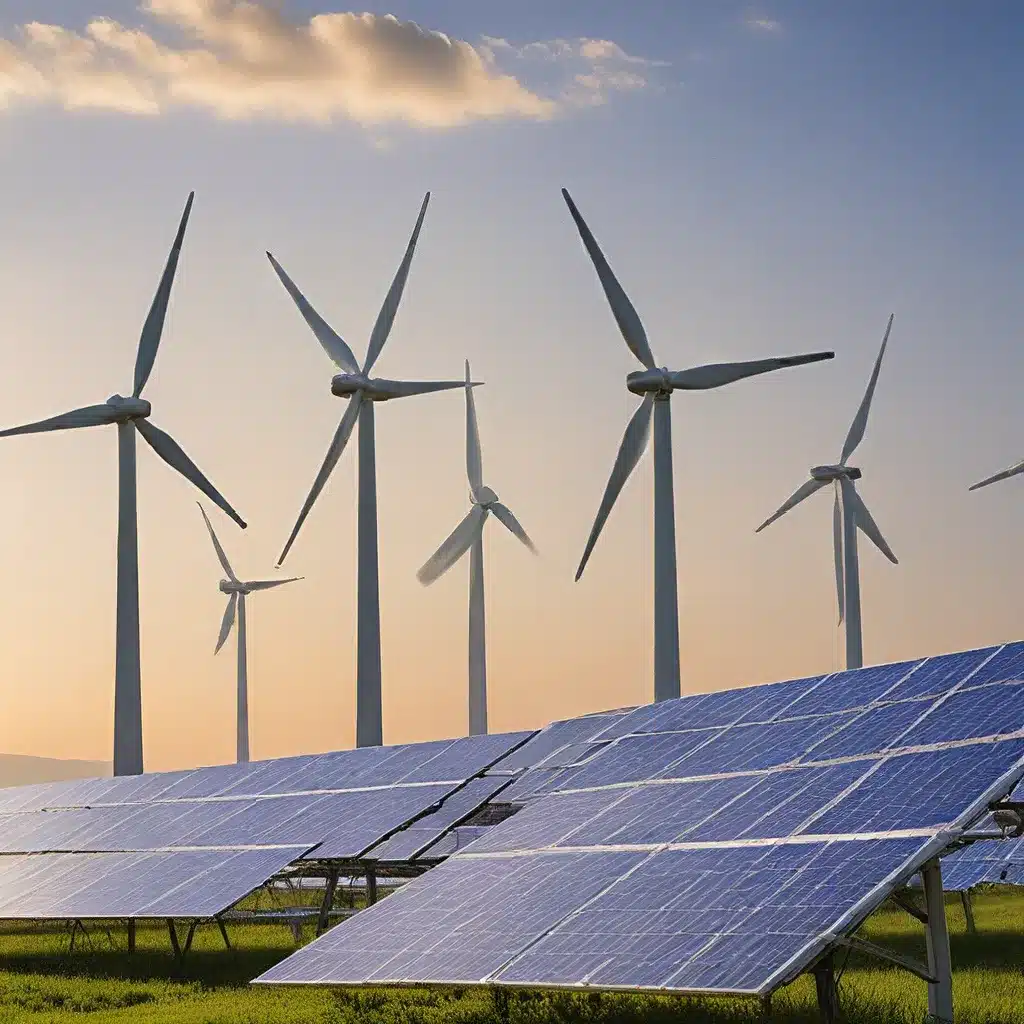
Unleashing the Transformative Power of Energy
As I dive into the world of renewable energy policies, I can’t help but feel a surge of excitement. Energy is the lifeblood of our modern society, and its role in shaping a sustainable future is truly transformative. From tackling the challenge of inadequate grid infrastructure to celebrating the remarkable progress in reducing CO2 emissions, this journey is filled with both obstacles and triumphs.
Let’s start with the grid. Upgrading the global electricity system is no easy feat, but it’s a crucial step in unlocking the full potential of renewable energy sources. According to the International Energy Agency (IEA), over 80 million kilometers of grid infrastructure need to be added or refurbished worldwide by 2040 to meet national climate targets. That’s a monumental undertaking, but one that holds the key to a greener, more efficient, and more resilient energy landscape.
As I delve deeper into this issue, I’m reminded of the Enel Group’s Strategic Plan 2024-2026, which recognizes the importance of investing in grid infrastructure. By upgrading and expanding these vital networks, we can significantly reduce harmful emissions, enhance energy efficiency, and better manage the fluctuations in renewable energy supply. Ultimately, this could extend electricity access to millions of people worldwide, truly transforming the way we power our homes, businesses, and communities.
Celebrating Progress in Emissions Reduction
While the infrastructure challenge is a formidable one, there’s also reason for celebration. In Europe, a recent analysis by the Centre for Research on Energy and Clean Air (CREA) revealed a promising trend: a remarkable 8% reduction in CO2 emissions from fossil fuels. This is the second-most significant drop since 2020 and the lowest level observed in six decades. Remarkably, over half of this decrease can be attributed to cleaner electricity generation, driven by the ongoing expansion of solar and wind power, alongside increased hydropower and nuclear capacity.
This achievement is a testament to the collective efforts of policymakers, investors, and the general public. It’s a clear indication that the transition to a sustainable energy future is well underway, and it’s inspiring to see the tangible results of these efforts. As I ponder the implications of this milestone, I can’t help but wonder what other breakthroughs are on the horizon.
Unlocking the Potential of Buildings
But the energy transformation doesn’t stop at the grid or power generation. In fact, a report titled “Transforming Energy Demand” by the World Economic Forum (WEF) and PwC suggests that buildings hold the key to unlocking significant energy savings.
According to the report, buildings are responsible for approximately one-third of global energy demand and greenhouse gas emissions. However, the good news is that buildings have the potential to reduce energy intensity by up to 38%, resulting in a 12% reduction in overall global energy demand. Furthermore, implementing energy-saving and efficiency measures could decrease process intensity by up to 90% without significant changes in technology, regulation, or external funding.
The implications of this are staggering. If we can effectively harness the energy-saving potential of buildings, we could yield annual savings of up to $2 trillion by 2030. This is a game-changing opportunity that should be at the forefront of policymakers’ and industry leaders’ minds.
Embracing the Sustainable Future
As I reflect on the insights gleaned from these various sources, I can’t help but feel a sense of cautious optimism. The challenges we face in transitioning to a sustainable energy future are substantial, but the progress we’ve already made is truly inspiring.
From the monumental task of upgrading the global grid to the remarkable reduction in CO2 emissions in Europe, and the untapped potential of energy-efficient buildings, it’s clear that the renewable energy revolution is well underway. But we must remain vigilant and continue to push the boundaries of what’s possible.
I’m eager to see what other innovative solutions and policy initiatives will emerge in the years to come. Perhaps we’ll witness breakthroughs in energy storage technology or the widespread adoption of electric mobility. Or maybe we’ll see a surge in investment in smart infrastructure and demand response services that optimize energy usage and reduce waste.
One thing is certain: the future of energy is inextricably linked to the health of our planet. By embracing renewable energy policies and harnessing the transformative power of energy, we can shape a sustainable tomorrow that benefits us all. And as I continue on this journey, I’m filled with a sense of purpose and a determination to be a part of this vital transformation.
So, let’s keep exploring, innovating, and challenging the status quo. The road ahead may not be easy, but with bold vision and collaborative action, I’m confident that we can create a brighter, more sustainable future for generations to come.

